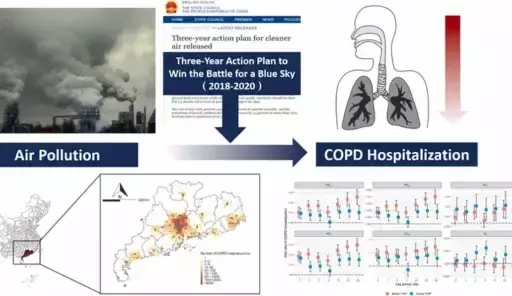Live
- Grand 30th Alumni Reunion at Vattam Jawahar Navodaya Vidyalaya
- Tensions Erupt Outside Allu Arjun's Residence as OU JAC Stages Protest
- DMK adopts resolution condemning Amit Shah's remarks on Ambedkar
- Truck Driver Brutally Murdered in Mulugu District
- Telangana State Cross Country Championship 2024 Successfully Conducted in Kalwakurthy
- Odisha: Collectors asked for proper assessment of crop loss due to unseasonal rainfall
- Woman flyer says Air India left passengers in the lurch in Milan
- ‘Nuvvu Gudhithe’ from ‘Drinker Sai’ is a playful exchange between lead pair
- ‘Marrichettu Kinda Manollu’ gets a grand launch
- Prabhas’ ‘Salaar: Part 1 - Cease Fire’ marks first anniv.
Just In
Is Pollution Contributing to Your COPD?


Is Pollution Contributing to Your COPD?
Learn how air pollution and smoking contribute to COPD, its symptoms, causes, and treatments, with expert insights from Dr. Sarah Rylance in this webinar.
The symptoms of Chronic Obstructive Pulmonary Disease (COPD) can include fatigue and trouble breathing, especially if you have been exposed to contaminated air. In this latest Science in 5 episode, Dr. Sarah Rylance discusses the signs, causes, therapies, and preventative strategies of COPD. She goes on to explain who might be more vulnerable.
What is COPD?
Emphysema and chronic bronchitis are two of the lung conditions that make up the group known as chronic obstructive pulmonary disease (COPD). “COPD causes inflammation and damage, which leads to a variety of symptoms depending on which parts of the airways are affected,” Dr. Rylance said.
COPD Signs
In many cases, the symptoms of COPD begin slowly and worsen over time. When performing daily activities such as walking uphill or climbing stairs, people may first feel dyspnoea. As the illness advances, even simple tasks like getting dressed or cleaning the house might become challenging. In more severe circumstances, people may become out of breath when eating or speaking.
A "flare-up" or "exacerbation" of COPD symptoms might happen occasionally, requiring medical treatment or even hospitalization. Symptoms may vary depending on the underlying condition. For instance, emphysema damages the air sacs in the lungs, causing dyspnoea, whereas chronic bronchitis causes inflammation of the airways, which leads to coughing and mucus production.
Why Do People Get COPD?
While smoking has long been recognised as a primary cause of COPD, Dr. Rylance notes that exposure to air pollution is another significant risk factor. This includes both indoor air pollution from cooking with biomass fuels (such as wood or charcoal) in enclosed spaces and outdoor air pollution from traffic and industrial activities.
Who Could Have COPD?
Many factors could increase the risk of developing COPD. Prior to birth, lung development begins and continues until the early 20s. Premature birth, maternal smoking, and exposure to air pollution are examples of environmental variables that might hinder lung growth during this time and raise a person's risk of getting COPD later in life.
Untreated asthma and childhood respiratory infections are additional risk factors. Additionally, certain genetic problems make certain people more susceptible to COPD.
Helping with COPD
Even though there is no known cure for COPD, early diagnosis and treatment can help manage the condition and improve quality of life. Important therapies include:
To slow the progression of the condition, quitting smoking is essential.
Lung function can be enhanced by regular exercise and some pulmonary rehabilitation regimens.
Breathing treatments that are breathed can help manage symptoms.
Immunisations against respiratory diseases including the flu and COVID-19 are essential for people with COPD.
- Pollution and COPD
- COPD causes and risk factors
- Air pollution health risks
- Chronic obstructive pulmonary disease triggers
- Environmental factors in COPD
- Air quality and respiratory health
- COPD and pollution connection
- COPD prevention tips
- Impact of smog on lungs Airborne pollutants and COPD
- Managing COPD in polluted areas
- Lung health and air pollution
- Role of environment in COPD
- Respiratory diseases and pollution

© 2024 Hyderabad Media House Limited/The Hans India. All rights reserved. Powered by hocalwire.com






